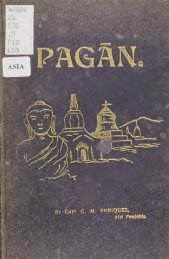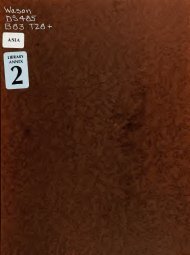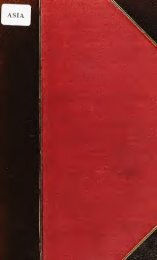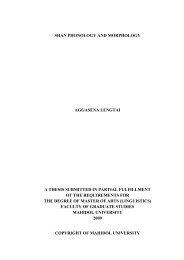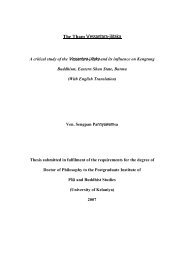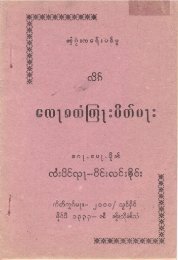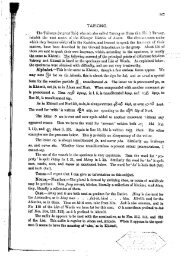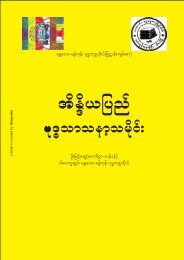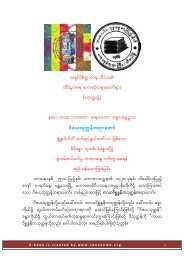The Tai Ahom National Council Memo Scheduling
The Tai Ahom National Council Memo Scheduling
The Tai Ahom National Council Memo Scheduling
You also want an ePaper? Increase the reach of your titles
YUMPU automatically turns print PDFs into web optimized ePapers that Google loves.
further aggravated during the seventeenth century when the whole of lower portion of the<br />
Brahmaputra Valley upto the Manaha River, was annexed to the <strong>Ahom</strong> kingdom after defeating<br />
the Mughal army in 1681 A.D. <strong>The</strong> territorial limit of the <strong>Ahom</strong> kingdom now extended from the<br />
Upper Chindwin valley beyond the Patkai on the east to Goalpara on the west covering both<br />
banks of the river Brahmaputra. This territorial limit of the <strong>Ahom</strong> kingdom remained unchanged<br />
till its occupation by the British during 1824-26 following the First Anglo-Burmese War.<br />
However, this expansion did not follow by a transfer of large <strong>Ahom</strong> population from<br />
their core area in Sibsagar to the newly acquired lands, and there is no such instance either in<br />
history or in tradition of the <strong>Ahom</strong>. Only some <strong>Ahom</strong> officials and their entourage (and their<br />
families as well) had been posted at certain centres for administrative purpose. In course of time<br />
there grew up only certain small pockets of <strong>Ahom</strong> settlements and these are still to be found.<br />
Under the circumstances there was no circumstance appeared for a large scale social mixing of<br />
the <strong>Ahom</strong> population with the non-<strong>Ahom</strong> population of the Central and Lower portions of the<br />
Valley. As such the unfounded theory that the <strong>Ahom</strong>s got mixed up with all sorts of people to<br />
loose their social and cultural identity, including biological, is a baseless surmise rather than a<br />
fact of history. <strong>The</strong> <strong>Ahom</strong>s never evinced any desire at any time of their history of six hundred<br />
years to ascend the caste hierarchy (Hindu) or to merge themselves in other non-<strong>Ahom</strong><br />
communities.<br />
Biological and Anthropological Studies on the <strong>Ahom</strong><br />
<strong>Ahom</strong> Distinct ‘Gene’ Identity Remained:<br />
Anthropologically, the Mongoloid <strong>Ahom</strong> have their high epicanthic fold with relative high skin<br />
colour bears the fact. “Brachycephalic and hyperbrachycephalic heads are few, though among<br />
the <strong>Ahom</strong> (1) this rises to very high figure (31 p.c. + 26 p.c.)” (<strong>The</strong> Gazetteer of India, Country<br />
and People, Vol. I, p. 302). Some two decades ago as noted by the well-known Professor<br />
Emeritus of Anthropology of Syracuse University, New York, Gordon T. Bowles “that there<br />
is no single monogenic or polygenic trait that is common to all so-called Mongoloids” (Peoples<br />
of Asia, 1977, pp. 344-45), and therefore one need not proceed from a supposition that when the<br />
<strong>Ahom</strong> arrived in the thirteenth century they carried the characteristics of an ideal <strong>Ahom</strong><br />
Mongoloid. But their blood mixture does not display erratic behaviour.<br />
<strong>The</strong>orizing the distinctive mixture of population Professor Bowles writes,




